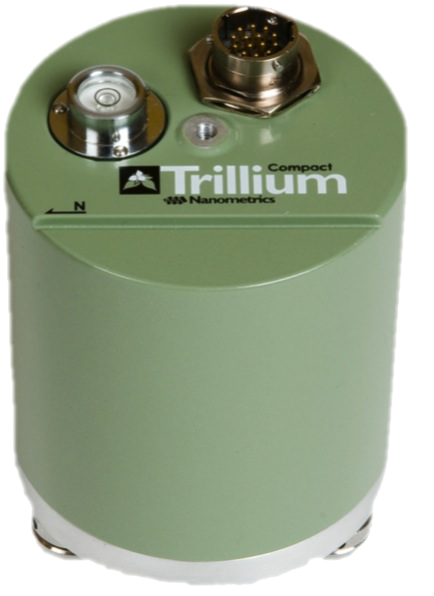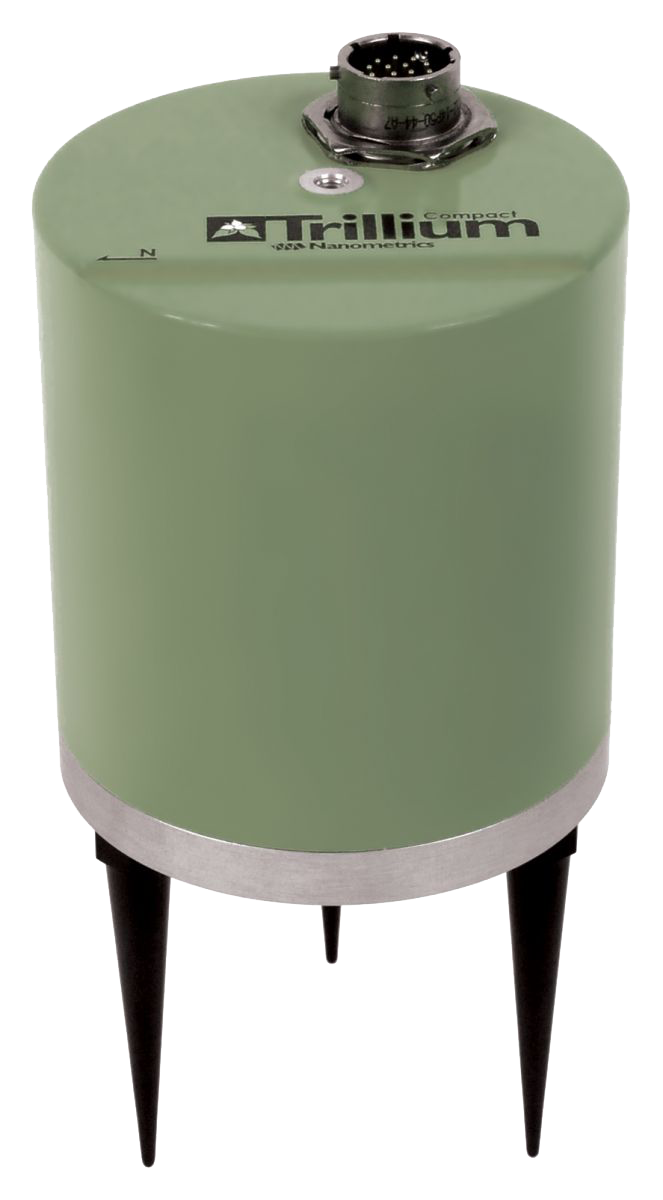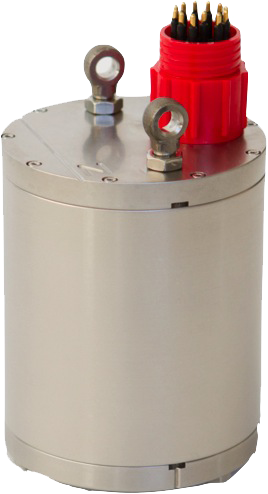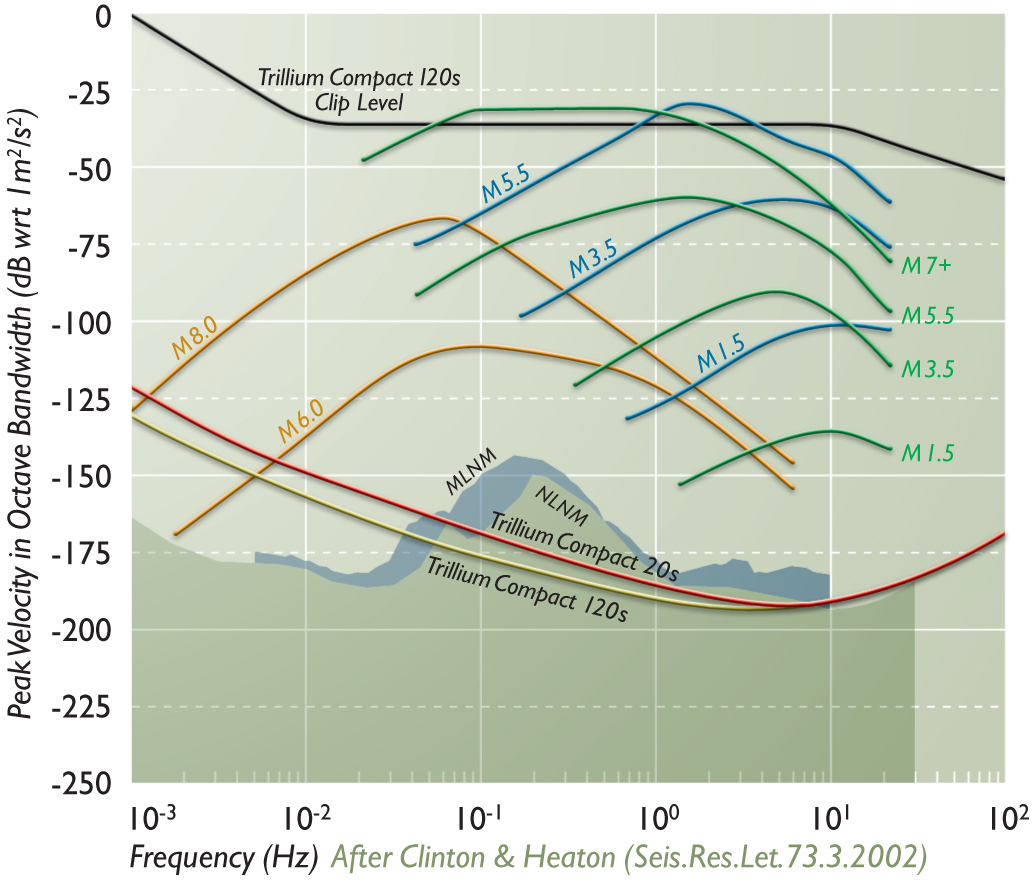Home / Products / Seismology / Trillium Compact Broadband Seismometer
Trillium Compact Broadband Seismometer
Summary
The Trillium Compact offers low-noise broadband seismometer performance with physical dimensions comparable to geophones. It measures only 5.04 inches in height and requires no mass lock or mass centering.
Its exceptionally high clip level of 26 mm/s permits on-scale recording of larger events closer to the source. It features an Integrated web server for efficient instrument management and ultra-low power consumption of just 160 mW.

The Trillium Compact is available in several variants to facilitate vault, surface or buried downhole deployments.
The 120s variant incorporates a symmetric triaxial force feedback sensor design with a response flat to velocity from 120 seconds to 100Hz.
The 20s version features the same force feedback sensor design with a response flat to velocity from 20 seconds to 100Hz, as well as industry-leading tilt tolerance of 10 degrees, making deployments very fast and efficient in various surface conditions. Several base foot options are available for different terrains.
The Trillium Compact Posthole, available in 120s and 20s variants, features a stainless steel enclosure and waterproof connector ideally suited for downhole deployments.

Nanometrics’ Trillium Compact might be right for you if:
- You're looking for the superior performance of a broadband seismometer with the installation convenience of a rugged geophone
- You want improved noise floor at high frequency
- You value easy deployment and minimized site preparation
- You don't want to sacrifice station reliability for low operating costs

Specifications
Specifications are subject to change without notice.
| TECHNOLOGY | |
| Topology | Symmetric triaxial |
| Feedback | Force balance with capacitive transducer |
| Mass centering | Not required |
| PERFORMANCE | |
| Sensitivity - 120s | 750V-s/m nominal ±0.5% precision |
| Bandwidth - 120s | -3 dB points at 120 s and 100 Hz |
| Sensitivity - 20s | 750V-s/m nominal ±0.5% precision |
| Bandwidth - 20s | -3 dB points at 20 s and 100 Hz |
| Off-axis sensitivity | ±0.5% |
| Transfer function |
Lower corner pole frequency within ±0.5% of nominal provided High-frequency poles within 1 dB of nominal up to 45 Hz No peak in response at high frequency |
| Clip level | 26 mm/s from 0.1 Hz to 10 Hz |
| Operational tilt range - 120s | ±2.5° |
| Operational tilt range - 20s | ±10° |
| Parasitic resonance | None below 200 Hz |
| Dynamic range | >152 dB @ 1 Hz |
| INTERFACE | |
| Connector - surface | 14-pin, shell size 12, MIL-C-26482 Series I, top mounted |
| Connector - downhole | 16-pin, underwater SubConn MCBH16MSS, top mounted |
| Velocity output |
±20V peak (40V peak-to-peak differential) Selectable XYZ or UVW mode |
| Mass position output |
Single voltage output representing max. mass position 3-channel mass positions available through serial port |
| Calibration input |
Single voltage input and one active high-control signal to enable all 3 channels Remote calibration in XYZ or UVW mode Independent channel selection by serial port |
| DIGITAL COMMAND & CONTROL INTERFACE | |
| Digital interface |
RS-232 compatible serial IP (SLIP) Onboard web server standard HTTP |
| Digital commands |
XYZ, UVW mode switching Calibration channel selection (off, enable all, U, V or W) Short/long period mode Firmware updates State-of-health request |
| Digital data outputs |
Independent mass position values Instrument temperature Factory sensitivity User calibration data (poles and zeroes) Instrument serial number and firmware revision |
| PHYSICAL | |
| Diameter | 90 mm (3.54") |
| Height | 100 mm (3.93") - body only |
| Housing | Surface resistant to corrosion, scratches and chips |
| Alignment |
Vertical scribe marks for N/S Precision N/S-E/W guide in top of cover for straight-edge, line or laser level |
| Immersion rating | IP67 |
| POWER | |
| Supply voltage | 9 to 36 V DC isolated inputs |
| Power consumption |
<180mW typical (model TC120-SV1) <195mW typical (model TC20-SV1) |
| Protection |
Reverse-voltage and over-voltage protected Self-resetting over-current protection revision |
| ENVIRONMENTAL | |
| Operating temperature | -40°C to +60°C |
| Storage temperature | -65°C to +75°C |
| Shock |
100 g half sine, 5 ms without damage, 6 axes No mass lock required for transport |
| Magnetic | Insensitive to natural variations of the earth's magnetic field |
Performance

Great companies are built on great products.


